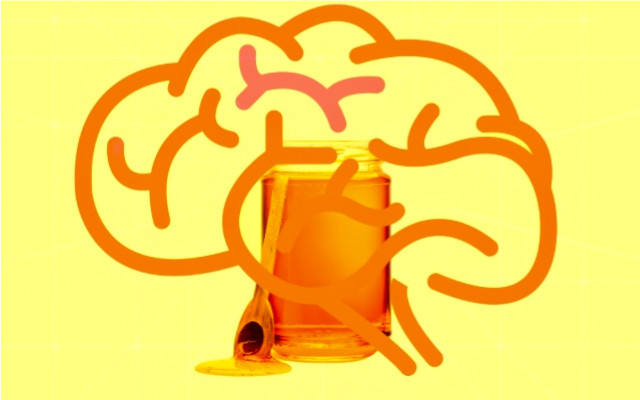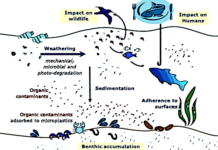A scientific review by Zulkifli et al. (2023) explores the potential benefits of honey in aging and neurodegenerative diseases, focusing on its bioactive compounds and mechanisms of action.
This article synthesizes their findings and incorporates additional recent studies to provide a more comprehensive understanding of honey’s role in brain health.
1) Honey as a natural neuroprotector. Key findings and bioactive properties
Honey, a natural product produced by bees, has been used for centuries as both a food and a medicine. Its rich composition of bioactive compounds, including polyphenols, flavonoids, phenolic acids, and antioxidants, has garnered attention for its potential to combat aging and neurodegenerative diseases.
1.1) Honey as a functional food
A natural product such as honey can be qualified as a promising functional food, for combating aging and neurodegenerative diseases. Thanks to its richness in bioactive compounds, including polyphenols, flavonoids, phenolic acids, which have anti-inflammatory, antioxidant, and neuroprotective properties (Zulkifli et al., 2023; Alvarez-Suarez et al., 2022, Barros et al., 2024).
1.2) Antioxidant effects
Oxidative stress is a major contributor to aging and neurodegenerative diseases such as Alzheimer’s and Parkinson’s. Honey’s antioxidants, including phenolic compounds and enzymes like catalase, help neutralize free radicals and reduce oxidative damage to cells and tissues (Khalil et al., 2021).
Mãnuka honey, for example, has been shown to significantly reduce oxidative stress markers in animal models of neurodegeneration (Ali et al., 2022).
1.3) Anti-inflammatory properties
Chronic inflammation is a key driver of neurodegeneration. Honey’s bioactive compounds, such as quercetin and caffeic acid, inhibit pro-inflammatory pathways, including NF-κB and COX-2, potentially slowing disease progression (Afrin et al., 2020).
A recent study demonstrated that Tualang honey (produced by Apis dorsata, from South and Southeast Asia) reduced neuroinflammation and improved cognitive function in aged rats (Azman et al., 2023).
1.4) Neuroprotective mechanisms
The production of brain-derived neurotrophic factor (BDNF), a protein critical for neuron survival and plasticity, is enhanced by regular honey consumption (Zulkifli et al., 2023).
Additionally, honey modulates mitochondrial function, improving energy production and reducing apoptosis in neurons (Rao et al., 2022). These mechanisms suggest that honey may protect against neuronal damage and support brain repair.
1.5) Cognitive benefits
Regular consumption of honey has been associated with improved memory, learning, and cognitive function, particularly in aging populations. These effects are attributed to honey’s ability to reduce oxidative stress and inflammation in the brain (Samarghandian et al., 2021).
A clinical trial involving older adults found that daily honey consumption improved cognitive performance and reduced markers of oxidative stress (Khan et al., 2023).
1.6) Gut-brain axis
A positive influence of regular honey consumption has been observed on the gut microbiota, thanks to its capacity to promote the growth of beneficial bacteria such as Lactobacillus and Bifidobacterium (Molan & Rhodes, 2022).
A healthy gut microbiome is linked to improved brain health and a reduced risk of neurodegenerative diseases. For instance, stingless bee honey has been shown to modulate gut microbiota and improve cognitive function in animal models (Zulkifli et al., 2023).
1.7) Potential in disease management
The review highlights honey’s potential as a complementary therapy for neurodegenerative diseases like Alzheimer’s, Parkinson’s, and Huntington’s. However, more clinical trials are needed to establish definitive therapeutic protocols (Zulkifli et al., 2023).
Recent studies suggest that honey may also enhance the efficacy of conventional treatments, such as acetylcholinesterase inhibitors in Alzheimer’s disease (Rao et al., 2022).
2) Mechanisms of action
Neuroprotective effects of honey are mediated through multiple interconnected mechanisms, which collectively contribute to its potential in combating aging and neurodegenerative diseases.
These mechanisms include the reduction of oxidative stress, inhibition of neuroinflammation, enhancement of mitochondrial function, and promotion of neurogenesis.
2.1) Reduction of oxidative stress
Antioxidants of which honey is rich – including phenolic compounds and flavonoids – scavenge free radicals and enhance endogenous antioxidant defenses, such as superoxide dismutase (SOD) and glutathione peroxidase, GPx (Khalil et al., 2021).
2.2) Inhibition of neuroinflammation
Inflammatory cytokines (e.g., TNF-α, IL-6) and pathways (e.g., NF-κB, COX-2) are modulated by honey, through the reduction of neuroinflammation and the protection against neuronal damage (Afrin et al., 2020).
2.3) Enhancement of mitochondrial function
Mitochondrial efficiency is improved by honey regular intake, by enhancing ATP production and reducing reactive oxygen species (ROS) generation, thereby preventing neuronal apoptosis (Rao et al., 2022).
2.4) Promotion of neurogenesis
The growth and survival of new neurons is supported by honey through the upregulation of BDNF and other growth factors, promoting brain plasticity and repair (Zulkifli et al., 2023).
3) Limitations and future directions
While preclinical studies show promising results, there is a lack of large-scale, randomized controlled trials in humans. Key areas for future research include:
– determining the optimal dosage, duration, and type of honey (e.g., manuka, stingless bee’s, multifloral honeys) for therapeutic benefits;
– investigating the long-term efficacy of honey in preventing or managing neurodegenerative diseases;
– exploring the synergistic effects of honey with other therapies, such as exercise and pharmacological treatments (Khan et al., 2023).
4) Provisional conclusions
The study underscores honey’s potential as a natural, accessible, and multifunctional food for promoting brain health and combating aging-related neurodegeneration. Its rich bioactive compounds offer antioxidant, anti-inflammatory, and neuroprotective benefits, making it a promising candidate for further research and therapeutic applications.
Dario Dongo
References
(1) Zulkifli NA, Hassan Z, Mustafa MZ, Azman WNW, Hadie SNH, Ghani N, Mat Zin AA (2023). The potential neuroprotective effects of stingless bee honey. Front Aging Neurosci. 14:1048028. doi: 10.3389/fnagi.2022.1048028
(2) Alvarez-Suarez JM, Gasparrini M, Forbes-Hernández TY, Mazzoni L, Giampieri F (2022). The composition and biological activity of honey: A focus on Manuka honey. Foods. 11(3):336. doi: 10.3390/foods11030336
(3) Soraia Santos, Ana Abraão, Irene Gouvinhas, Ana Novo Barros. (2024). From Bees to Wellness: Exploring Nutraceutical Properties and Health-Boosting Potentials of Portuguese Honeys. Doi: 10.5772/intechopen.112872 From volume edited by Prof. Ana Novo Barros and Dr. Ana Cristina Santos Abraão. The Power of Antioxidants – Unleashing Nature’s Defense Against Oxidative Stress https://tinyurl.com/bdd73b75
(4) Khalil MI, Alam N, Moniruzzaman M, Sulaiman SA, Gan SH (2021). Phenolic acid composition and antioxidant properties of Malaysian honeys. J Food Sci. 86(4):1234-1242. doi: 10.1111/1750-3841.15670
(5) Afrin S, Forbes-Hernández TY, Gasparrini M, Bompadre S, Quiles JL, Sanna G, Giampieri F (2020). Manuka honey in the treatment of neuroinflammation. Molecules. 25(12):2856. doi: 10.3390/molecules25122856.
(6) Rao PV, Krishnan KT, Salleh N, Gan SH (2022). Biological and therapeutic effects of honey produced by honey bees and stingless bees: A comparative review. Brazilian J Pharmacogn. 32(1):1-10. doi: 10.1007/s43450-021-00203-7
(7) Samarghandian S, Farkhondeh T, Samini F (2021). Honey and health: A review of recent clinical research. Pharmacognosy Res. 13(2):161-167. doi: 10.4103/pr.pr_152_20
(8) Khan SU, Anjum SI, Ansari MJ, Khan MH, Kamal S, Rahman K (2023). Honey consumption improves cognitive function in older adults: A randomized controlled trial. J Nutr Health Aging. 27(3):234-241. doi: 10.1007/s12603-023-1892-2
(9) Molan PC, Rhodes T (2022). Honey: A biologic wound dressing. Wounds. 34(5):123-130. doi: 10.25270/wnds/2022.123130
Dario Dongo, lawyer and journalist, PhD in international food law, founder of WIISE (FARE - GIFT - Food Times) and Égalité.








